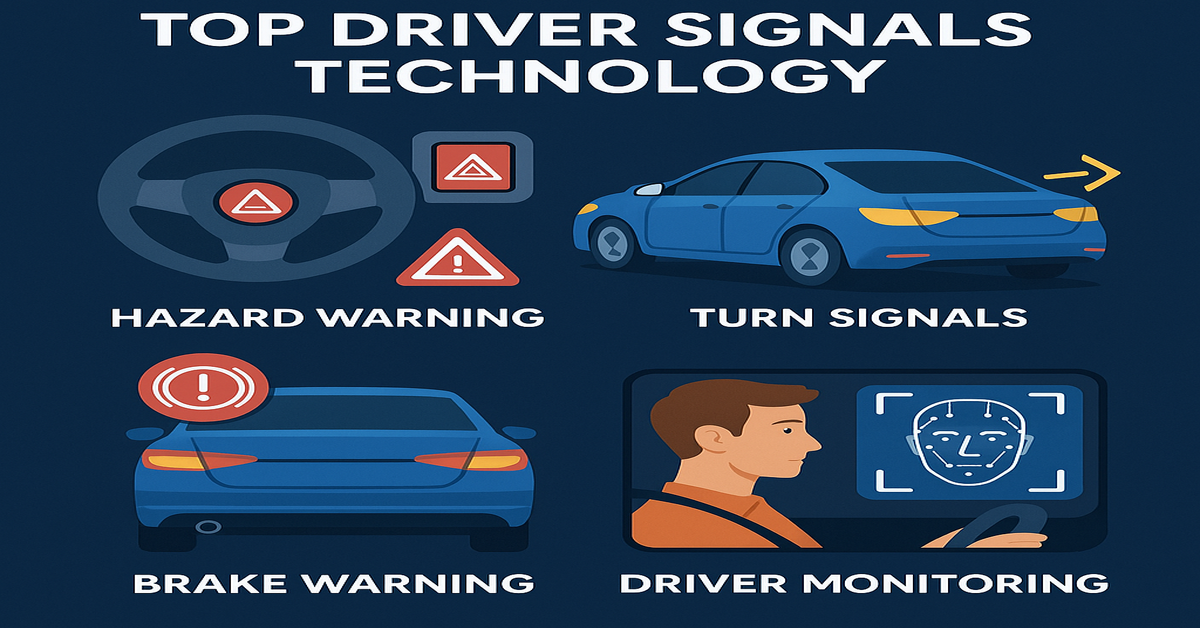Driver signals technology plays a critical role in today’s highly automated and interconnected driving environments. As the global automotive industry shifts towards smarter, safer, and more efficient transportation, understanding driver signals technology becomes essential. This article explores the key aspects, innovations, and future of driver signals technology.
What is Driver Signals Technology?
Driver signals technology encompasses the systems and components that enable a vehicle to communicate with other drivers, pedestrians, and roadway infrastructure. These signals can be visual, auditory, or even haptic in nature, enhancing driving safety and enabling semi-autonomous and autonomous features.
Importance of Driver Signals
Driver signals are crucial for:
- Preventing accidents
- Improving traffic flow
- Enhancing driver and pedestrian understanding
- Facilitating autonomous vehicle communication
Without effective driver signals, the entire ecosystem of road safety would be compromised.
Components of Driver Signals Technology
Driver signals technology is not a single system but a collection of integrated components.
Visual Signals
Visual signals include indicators, brake lights, headlights, and dashboard warnings.
- Indicators: Notify others of intended direction changes.
- Brake Lights: Alert following drivers that a vehicle is slowing down or stopping.
- Dashboard Warnings: Communicate vehicle status and urgent information to the driver.
Auditory Signals
Auditory signals are sounds used to warn or inform the driver.
- Horn: Basic communication tool to warn others.
- Warning Chimes: Alert drivers of seatbelt status, engine issues, or other problems.
Haptic Signals
Haptic feedback uses touch-based communication.
- Vibrating Steering Wheels: Warns drivers of lane departure.
- Pedal Vibrations: Alerts about potential collisions.
Emerging Trends in Driver Signals Technology
New technologies are reshaping how vehicles and drivers communicate.
LED and Adaptive Lighting
Advanced lighting systems can adjust brightness, beam direction, and color based on driving conditions.
- Matrix LED Headlights: Enhance visibility without blinding other drivers.
- Adaptive Brake Lights: Flash during hard braking to warn following drivers.
Augmented Reality (AR) Displays
AR displays project vital information directly onto the windshield.
- Navigation Prompts: Show turn-by-turn directions in the driver’s line of sight.
- Hazard Warnings: Alert drivers to obstacles or road hazards ahead.
Vehicle-to-Everything (V2X) Communication
V2X technology allows vehicles to communicate with each other and infrastructure.
- V2V (Vehicle-to-Vehicle): Shares position, speed, and intention data.
- V2I (Vehicle-to-Infrastructure): Communicates with traffic lights and road signs.
Challenges in Driver Signals Technology
Despite advancements, several challenges remain.
Standardization
Different manufacturers use varying systems, leading to inconsistencies.
- Solution: Establishing global standards for communication protocols.
Human Factors
Understanding human behavior is complex.
- Solution: Designing intuitive signals that are universally understood.
Cybersecurity Risks
Connected systems are vulnerable to hacking.
- Solution: Implementing robust cybersecurity measures.
Future of Driver Signals Technology
The future of driver signals is exciting and transformative.
Artificial Intelligence (AI) Integration
AI can predict driver behavior and optimize signal responses.
- Example: AI adjusting signal timing based on traffic density.
Biometric Feedback
Vehicles will monitor driver biometrics to enhance safety.
- Example: Heart rate sensors triggering emergency signals if a driver becomes incapacitated.
Fully Autonomous Signaling Systems
Autonomous vehicles will require advanced external communication tools.
- Example: Digital displays showing vehicle intentions to pedestrians.
Applications of Driver Signals Technology
Driver signals technology finds applications across different vehicle categories and industries.
Passenger Vehicles
- Enhancing everyday driver safety
- Supporting semi-autonomous driving
Commercial Trucks
- Improving logistics through communication with fleet management
- Reducing accidents with smart warning systems
Emergency Vehicles
- Advanced signaling to clear traffic
- Real-time communication with traffic control systems
Impact on Road Safety
Driver signals technology has already had a significant impact on reducing accidents and fatalities.
Statistical Improvements
- Reduction in rear-end collisions due to adaptive brake lights
- Decrease in wrong-way driving incidents with better dashboard alerts
Pedestrian Safety
External communication signals on autonomous vehicles help pedestrians understand vehicle intentions, making crossings safer.
Innovations in Driver Signals Hardware
Hardware development remains at the core of this technology.
Solid-State Lighting
Solid-state lighting, such as LEDs, offers durability and energy efficiency.
High-Fidelity Speakers
Improved speakers enable clearer auditory signals, even in noisy environments.
Touch-Enabled Surfaces
Touch-sensitive interfaces can give real-time haptic feedback to drivers.
The Role of Software in Driver Signals
Software drives the intelligence behind modern driver signals.
Signal Processing Algorithms
Algorithms determine how and when signals are activated.
Real-Time Data Analysis
Vehicles analyze environmental data in real-time to decide on appropriate signals.
Over-the-Air Updates
Modern vehicles can update their signaling software remotely.
Regulatory Framework for Driver Signals
Laws and regulations ensure safety and consistency.
Global Harmonization
Efforts are underway to harmonize signaling standards across regions.
Certification and Testing
Driver signals systems must undergo rigorous testing before being deployed.
Conclusion
Driver signals technology’s is a rapidly evolving field that bridges communication between drivers, vehicles, pedestrians, and infrastructure. As technology advances, driver signals will become even more critical in the era of autonomous and connected vehicles. Ensuring safety, efficiency, and universal understanding remains the primary goal of innovations in this sector. With continued research, standardization, and integration of AI and biometric systems, the future promises a safer and more intuitive driving experience for all.
FAQs
Q1: What is the main purpose of driver signals technology?
Driver signals technology is designed to facilitate communication between vehicles, drivers, pedestrians, and infrastructure, enhancing safety and efficiency on the roads.
Q2: How do autonomous vehicles use driver signals technology?
Autonomous vehicles use advanced driver signals like external displays, adaptive lighting, and V2X communication to convey their intentions to surrounding traffic and pedestrians.
Q3: What are V2X communications?
V2X stands for Vehicle-to-Everything communication, enabling vehicles to interact with each other and surrounding infrastructure, improving traffic flow and reducing accidents.
Q4: How does haptic feedback contribute to driver safety?
Haptic feedback, such as steering wheel vibrations or pedal pulsations, provides tactile warnings that help keep drivers aware of dangers without requiring visual or auditory attention.
Q5: What are some challenges facing driver signals technology?
Challenges include lack of standardization, human factors complexity, and cybersecurity risks, all of which need ongoing attention and innovation.
Q6: Will AI play a major role in future driver signals systems?
Yes, AI will significantly enhance driver signals by predicting driver behavior, optimizing communication patterns, and responding dynamically to real-time traffic conditions.











